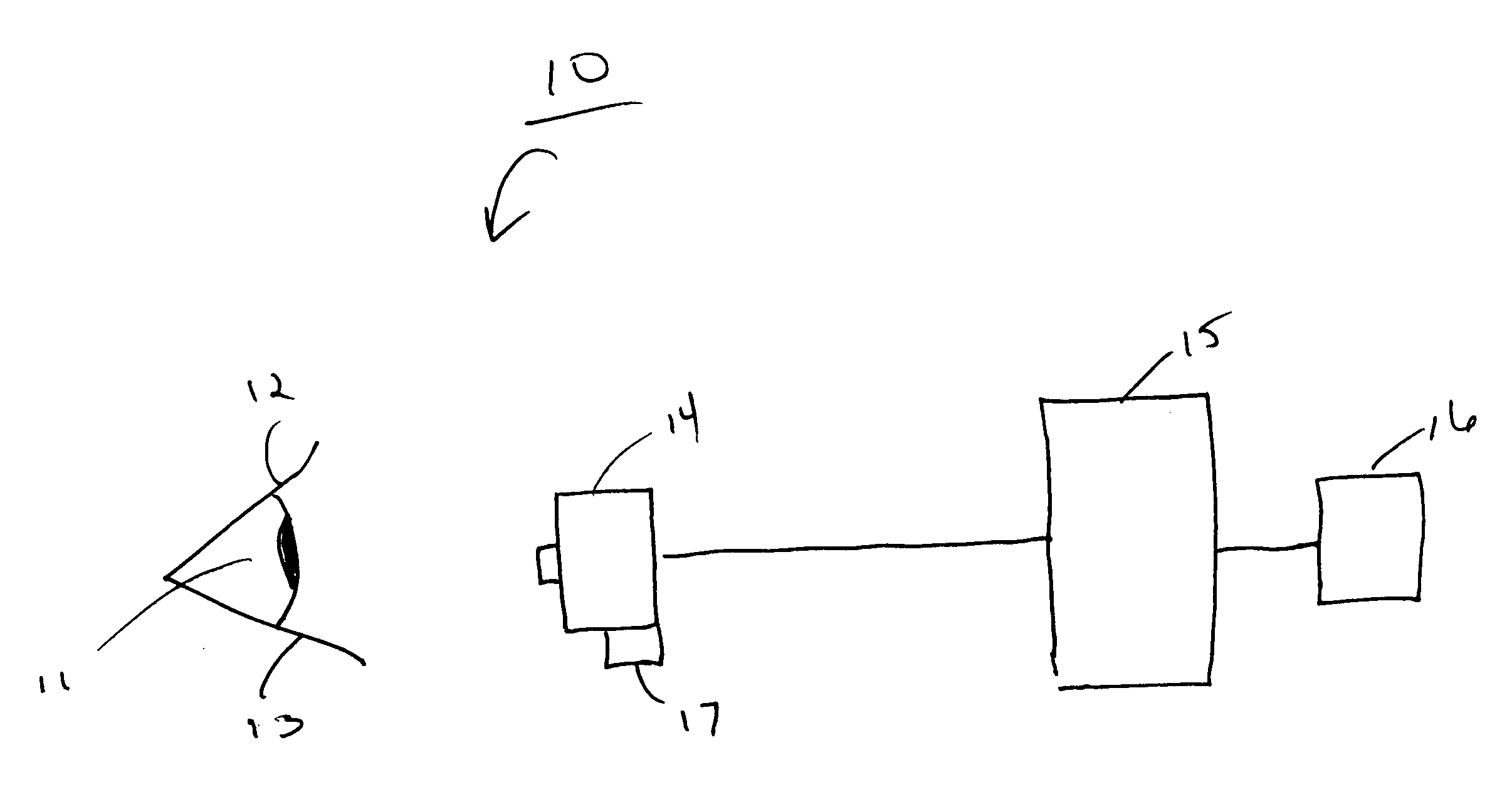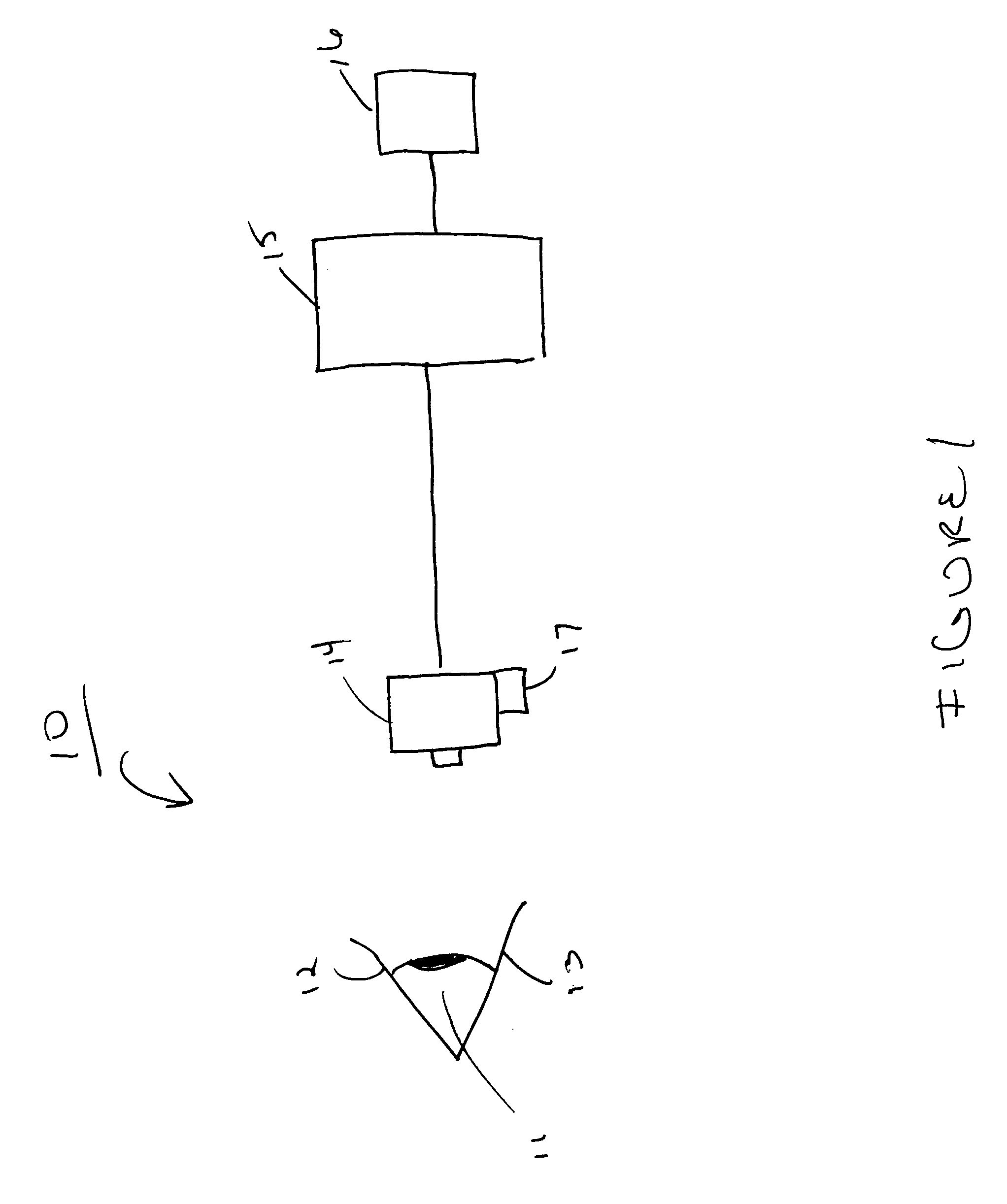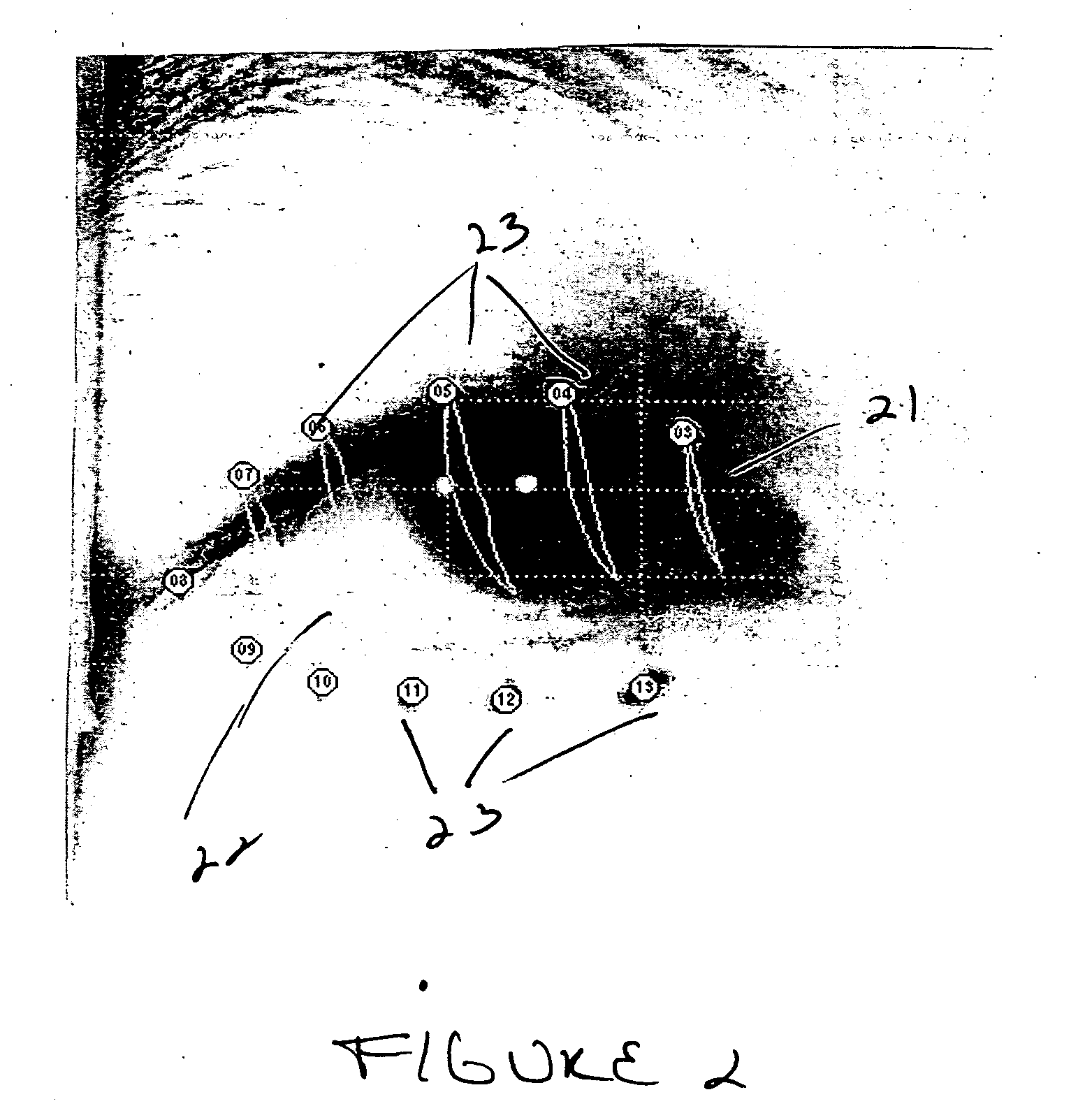Method for evaluating eyelid movement and contact lens position
a contact lens and eyelid movement technology, applied in the field of designing ophthalmic lenses, can solve the problems of long lens design and evaluation cycle, inability to accurately take into account the effect of eyelid movement on lens stability, and inability to accurately take into account the effect of eyelid movement on eyelid stability
- Summary
- Abstract
- Description
- Claims
- Application Information
AI Technical Summary
Problems solved by technology
Method used
Image
Examples
Embodiment Construction
[0007] In the present invention, a method for designing contact lenses, including toric contact lenses, and lenses produced by the method are provided. The method of the invention permits the direct correlation of an individual's subjective assessment of the lens' performance with the objective measurement of one or both of on-eye lens position and eyelid movement. The method permits generation of lens designs that have enhanced on-eye stability in less time than conventional design methods. Additionally, the method may be used to design a lens that is customized to an individual.
[0008] In one embodiment, the invention provides a method comprising, consisting essentially of, and consisting of the steps of: a.) placing a contact lens comprising a first design on an individual's eye; b.) recording one or both of the individual's eyelid movement and the contact lens position over an effective period of time; c.) analyzing the recording to evaluate one or both of the individual's eyeli...
PUM
 Login to View More
Login to View More Abstract
Description
Claims
Application Information
 Login to View More
Login to View More - R&D
- Intellectual Property
- Life Sciences
- Materials
- Tech Scout
- Unparalleled Data Quality
- Higher Quality Content
- 60% Fewer Hallucinations
Browse by: Latest US Patents, China's latest patents, Technical Efficacy Thesaurus, Application Domain, Technology Topic, Popular Technical Reports.
© 2025 PatSnap. All rights reserved.Legal|Privacy policy|Modern Slavery Act Transparency Statement|Sitemap|About US| Contact US: help@patsnap.com



